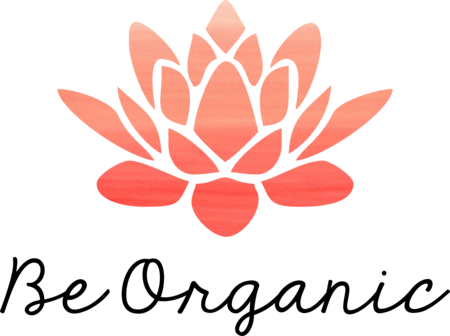Having experienced pesticide exposure that compromised my health severely, my eyes were opened. Gradually I became more aware of the ingredient labels of the food we eat, the cleaning products we use in our homes and the skin and body care products that we use. It was this awareness that lead me to discover Dr. Hauschka Skin and Body Care – a natural and certified-organic product that is not harmful to you, animals or the environment.
The question is: “Where do you start?" The skin is a person's largest organ - open to anything in the environment so one should consider to start reading the labels of skin and household products. It can be quite overwhelming to read the labels, but a general rule of thumb is that if you can’t pronounce the ingredients, then you should rather swop it for something cleaner and safer – unless you are looking at the botanical name of a plant ingredient.
The skincare industry is unregulated and this makes it difficult to trust the claims that manufacturers place on their products. If the label does not state organic and natural, then be rest assured that you are looking at a product that contains harmful chemicals. Even “organic” is misleading. Companies can use an organic label only if all ingredients are certified-organic, but they can also say it’s “made with organic ingredients” if it contains a minimum of 70 percent certified-organic ingredients. Regardless, 30 percent still leaves a lot of room for toxins. Often the orginal ingredient may be organic but add preservatives to the mix and the product becomes toxic.
Some of these toxins include industrial chemicals, including carcinogens, pesticides, reproductive toxins, and hormone disruptors. Many products include plasticizers (chemicals that keep concrete soft), degreasers (used to get grime off auto parts), and surfactants (they reduce surface tension in water, like in paint and inks). Imagine what that does to your skin, and to the environment? Over time these substances build up in your body and cause health issues such as infertility, cancer, auto-immune diseases to name but a few.
In short we need to generate awareness and that is why I am highlighting this matter. Please see below a list of a few of the major culprits you can be on the lookout for:
Coal Tar: A known carcinogen. Used in dry skin treatments, anti-lice and anti-dandruff shampoos.
DEA/TEA/MEA: Suspected carcinogens used as emulsifiers and foaming agents for shampoos, body washes, soaps.
Ethoxylated surfactants and 1,4-dioxane: Never listed because it’s a by-product made from adding carcinogenic ethylene oxide to make other chemicals less harsh. The Environmental Working Group (EWG) has found 1,4-dioxane in 57 percent of baby washes in the U.S. Avoid any ingredients containing the letters "eth."
Formaldehyde: Probable carcinogen and irritant found in nail products, hair dye, fake eyelash adhesives, shampoos. Banned in the EU.
Fragrance/Parfum: A catchall for hidden chemicals, such as phthalates. Fragrance is connected to headaches, dizziness, asthma, and allergies.
Hydroquinone: Used for lightening skin. Banned in the UK, rated most toxic on the EWG’s Skin Deep database, and linked to cancer and reproductive toxicity.
Lead: Known carcinogen found in lipstick and hair dye, but never listed because it’s a contaminant, not an ingredient.
Mercury: Known allergen that impairs brain development. Found in mascara and some eyedrops.
Mineral oil: By-product of petroleum that’s used in baby oil, moisturizers, styling gels. It creates a film that impairs the skin’s ability to release toxins.

Oxybenzone: Active ingredient in chemical sunscreens that accumulates in fatty tissues and is linked to allergies, hormone disruption, cellular damage, low birth weight.
Parabens: Used as preservatives, found in many products. Linked to cancer, endocrine disruption, reproductive toxicity.

Paraphenylenediamine (PPD): Used in hair products and dyes, but toxic to skin and immune system.
Phthalates: Plasticizers banned in the EU and California in children’s toys, but present in many fragrances, perfumes, deodorants, lotions. Linked to endocrine disruption, liver/kidney/lung damage, cancer.
Placental extract: Used in some skin and hair products, but linked to endocrine disruption.
Polyethylene glycol (PEG): Penetration enhancer used in many products, it’s often contaminated with 1,4-dioxane and ethylene oxide, both known carcinogens.
Silicone-derived emollients: Used to make a product feel soft, these don’t biodegrade, and also prevent skin from breathing. Linked to tumour growth and skin irritation.
Sodium lauryl (ether) sulfate (SLS, SLES): A former industrial degreaser now used to make soap foamy, it’s absorbed into the body and irritates skin.
Talc: Similar to asbestos in composition, it’s found in baby powder, eye shadow, blush, deodorant. Linked to ovarian cancer and respiratory problems.

Toluene: Known to disrupt the immune and endocrine systems, and fetal development, it’s used in nail and hair products. Often hidden under fragrance.
Triclosan: Found in antibacterial products, hand sanitizers, and deodorants, it is linked to cancer and endocrine disruption.
Please add these ingredients to your list of definite “NOs” and choose products that will not sabotage to your health.
Many thanks to the following sources for information regarding toxins:
